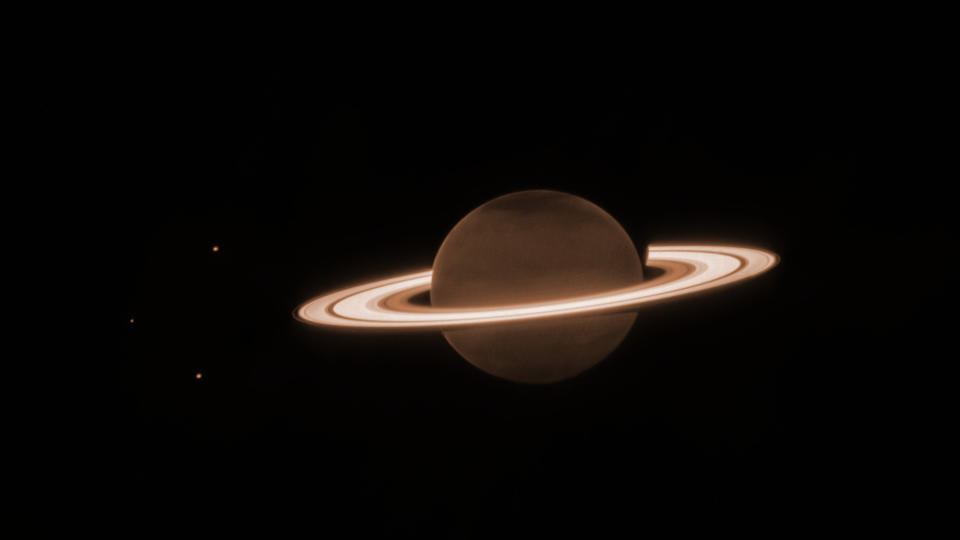When you buy through links on our articles, Future and its syndication partners may earn a commission.

Saturn will reach opposition this weekend when the ringed planet and the sun are directly opposite of each other in the sky.
Just after midnight tonight, Saturn will appear at its biggest and brightest in the night sky. This is because Earth will be positioned directly between Saturn and the sun, offering stargazers a spectacular sight — and a chance to catch a glimpse of the planet’s rings before they turn edge on and “disappear” from view.
Appearing in the constellation Aquarius, Saturn will be visible for much of the night, rising at around the same time that the sun sets, and setting at around the same time that the sun rises. The planet will officially reach opposition at 12:27 a.m. EDT (0427 GMT) on Sunday, Sept. 8, and then shortly after reach its highest point in the sky at 12:50 a.m. EDT (0450 GMT), according to In-the-Sky.org.
Opposition occurs when a planet is on the opposite side of the sky from the sun, with Earth in between. During this time, Saturn will also be at its closest point to Earth in its orbit — called perigee — making it appear brighter and larger than at any other time of the year.
Around the time of opposition, viewers may experience a phenomena called the Seeliger Effect, during which Saturn’s rings — made of ice particles, rocky debris and cosmic dust — noticeably brighten. This occurs because “the ice particles are illuminated from almost exactly the same direction from which we view them, meaning that we see very few which are in shadow,” according to In-the-Sky.org.
Related: Night sky, September 2024: What you can see tonight [maps]


TOP TELESCOPE PICK


Looking for a telescope to see Saturn in the night sky? We recommend the Celestron StarSense Explorer DX 130AZ as the best for basic astronomy in our best beginner’s telescope guide.
This weekend may also be the best time to get a glimpse of Saturn’s iconic rings before they align edge-on with Earth in March 2025 and, due to their thinness, become impossible to see. This disappearing act occurs because Saturn’s axis, much like Earth’s, is tilted relative to its orbit, causing its rings — located directly above the planet’s equator — to temporarily tip out of our view from Earth when the southern hemisphere is pointed toward the sun, according to Earth.com.
Luckily, the rings won’t be hidden for long. After March 2025, the rings will come back into view briefly before disappearing again in November 2025. As Saturn continues its orbit, and its tilt shifts, the rings will gradually return to our view from Earth.
Weather permitting, the waxing crescent moon should offer dark, clear skies for viewing Saturn during opposition this weekend. While the planet will be visible to the naked eye, it’ll appear only as a star-like point of light, and viewers will need a telescope to see the rings.
If you’re looking for binoculars or a telescope to see Saturn, our guides for the best binoculars and the best telescopes have options that can help. Be sure to also check out our guides on how to photograph the planets, the best cameras for astrophotography and the best lenses for astrophotography.
And don’t miss our night sky tonight page and monthly skywatching calendar for more celestial events to take in!
Editor’s Note: If you snap a good photo of Saturn and would like to share it with Space.com’s readers, send your photo(s), comments, and your name and location to [email protected].
Source Agencies



